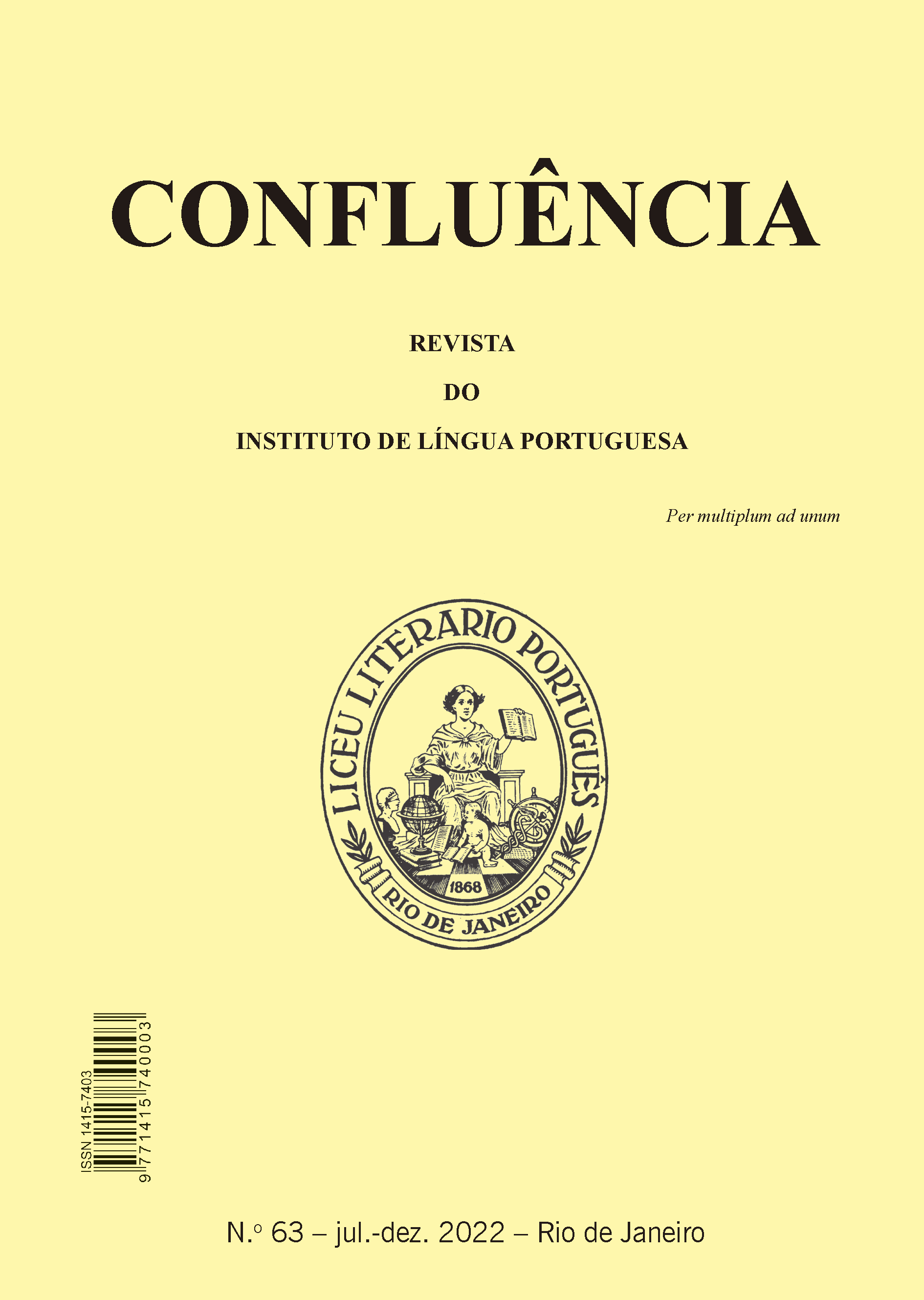Decensy taboos in the Cearense speech: a reflection based on non-clinical neurolinguistics and variationist sociolinguistics
DOI:
https://doi.org/10.18364/rc.2022n63.529Keywords:
Taboo, neurolinguistics, sociolinguistics, euphemization, dysphemizationAbstract
This descriptive, qualitative and quantitative research analizes a linguistic taboo in the Cearense speech according to the interdisciplinary areas of Sociolinguistics and non clinical Neurolinguistics. It is demonstrated that it is possible to join the interdisciplinary areas in both theoretical and methodological principles. With the use of GoldVarb X program, the concepts of euphemism and dysphemism, besides the concepts of conscious and unconscious in Freudian psychology, have been taken into consideration. The statistical results showed that the capital Fortaleza replaces disphemized the word prostitute, with other euphemized variants, such as rapariga. The other controlled cities showed different results, but in general it can be consider that the conscious use of the word prostitut is stigmatized, more than in euphemized variants such as rapariga or mulher de vida fácil. The statistical data demonstrate that when using a taboo word, in an euphemized or dysphemized way, the speaker unconsciously chooses one of the variants motivated by sex and age factors.
Downloads
References
ALLAN, K.; BURRIDGE, K. Forbidden Words. Taboo and the Censoring of Language. Cambridge: Cambridge University Press, 2006.
ALMEIDA, L. de. À guisa de uma tipologia para os tabus linguísticos – proposta para um glossário. 2007. 193 p. Tese (Doutorado em Linguística) – Faculdade de Filosofia, Letras e Ciências humanas, São Paulo, 2007.
ANTHES, E. Profane Brain. Psychology Today, [S.l.] v. 43: 4, n. 22, 2010. Disponível em: https://www.psychologytoday.com/us/articles/201007/ language-profanebrain. Acesso em: 10 abril 2021.
BURGOS, P. A ciência do Palavrão. Super Interessante. Caderno de ciências, 31 de janeiro de 2008.
BECHARA, E. Dicionário da Academia Brasileira de Letras: língua portuguesa. Companhia Editora Nacional, 3ª edição, São Paulo, 2011.
BIDERMAN, M. T. C. Teoria Lingüística (lingüística quantitativa e computacional). Rio de Janeiro: Livros Técnicos e Científicos, 1978, v.1, 277 p.
CARDOSO, S. A; MOTA, J. A. Projeto Atlas Linguístico do Brasil: Antecedentes e Estágio Atual. Revista Alfa, São Paulo, 2012, p.856 – 870. Disponível em: https://www.scielo.br/pdf/alfa/v56n3/a06v56n3.pdf. Acesso em: 10 de abril 2021.
FREUD, S. Totem e Tabu. In: Obras Psicológicas Completas: Edição Standard Brasileira, Rio de Janeiro. Imago, [1913] 1996.
GUÉRIOS, R. F. M. Tabus Linguísticos. 2. ed. aum. São Paulo: Ed. Nacional; Curitiba: Ed. da Universidade Federal do Paraná, 1979.
GUY, G. R.; ZILLES, A. Sociolinguística Quantitativa: instrumental de análise. São Paulo: Editora Parábola, 2007.
JACKSON, J. H. On the Nature of the Duality of the Brain. 1874. In: TAYLOR, J. (ed.). SelectedWritingsof John Hughlings Jackson. London: Hodder & Stoughton, 1958. v. 2, p. 129-145.
JAY, T. Why We Curse: A Neuro-Psycho-Social Theoryof Speech. Amsterdam; Philadelphia: John Benjamins, 2000.
LABOV, W. Padrões Sociolinguísticos. Tradução de Marcos Bagno, Maria Marta Pereira Scherre, Caroline R. Cardoso. São Paulo: Parábola Editorial, 2008. 389 p. Título original: Sociolinguistic Patterns.
LACAN, J. Écrits. Paris: Seuil, 1966.
LACAN, J. Autres écrits. Paris: Seuil, 2001.
LANCKER, D. V.; CUMMINGS, J. L. Expletives: NeurolinguiticandNeurobehavioral Perspectives onSwearing. Brain Research Reviews, [S.l.], v. 31, p. 83-104, 1999.
LURIA, A. R. Curso de Psicologia Geral – Introdução Evolucionista à Psicologia v.1. São Paulo. Civilização Brasileira. 1979.
MECACCI, L. Conhecendo o cérebro. São Paulo. Nobel. 1987.
MINAYO, M. C. S. O desafio do conhecimento. Pesquisa qualitativa em saúde. São Paulo: HUCITEC, 2007.
PRODANOV, C. C.; FREITAS, E. C. Metodologia do trabalho científico[recurso eletrônico]: métodos e técnicas da pesquisa e do trabalho acadêmico. 2. ed. Novo Hamburgo: Freevale, 2013.
SANKOFF, D.; TAGLIAMONTE, S. A. ; SMITH, Eric. Goldvarb X - A multivariateanalysis application. Toronto: Department of Linguistics; Ottawa: Department of Mathematics, 2005. Disponívelem: . Acesso em: 10 fev. 2021.
TARALLO, F. A pesquisa sociolinguística. 5. ed. São Paulo: Ática,1997.
ULLMANN, S. A Semântica. Uma introdução ao estudo do significado. 5. ed. Lisboa: Fundação Calouste Gulbenkian, 1964.
VILAÇA, M. G. da C. Tabus linguísticos na publicidade brasileira. 2009. 132 p. Dissertação (Mestrado em Linguística) – Universidade Federal de Pernambuco, Recife, 2009.
XIAO, W. O eufemismo e o disfemismo em português e chinês, na obra do P.e Joaquim Gonçalves. 2015. 92 f. Dissertação (Mestrado em Estudos Interculturais Português-Chinês: Tradução, Formação e Comunicação Empresarial) - Universidade do Minho Instituto de Letras e Ciências Humanas, Braga, Portugal, 2015. Disponível em: http://repositorium. sdum.uminho.pt/bitstream/1822/34271/1/Wang%20Xiao.pdf. Acesso em: 02 maio 2021.
Downloads
Published
Issue
Section
License
Copyright (c) 2022 Cassio Murilio Alves de Lavor

This work is licensed under a Creative Commons Attribution-NonCommercial 4.0 International License.
The author who publishes in this journal agrees to the following terms: The author maintains the copyright and grants the journal the right of first publication, with the work simultaneously licensed under the Creative Commons Attribution License that allows the sharing of the work with acknowledgment of the authorship and initial publication in this journal. The author is authorized to take additional contracts separately, for non-exclusive distribution of the version of the work published in this journal (eg publish in institutional repository or as a book chapter), with acknowledgment of authorship and initial publication in this journal. The author is allowed and encouraged to publish and distribute his work online (eg in institutional repositories or on their personal page) at any point before or during the editorial process, as this can generate productive changes, as well as increase the impact and citation of the published work.








